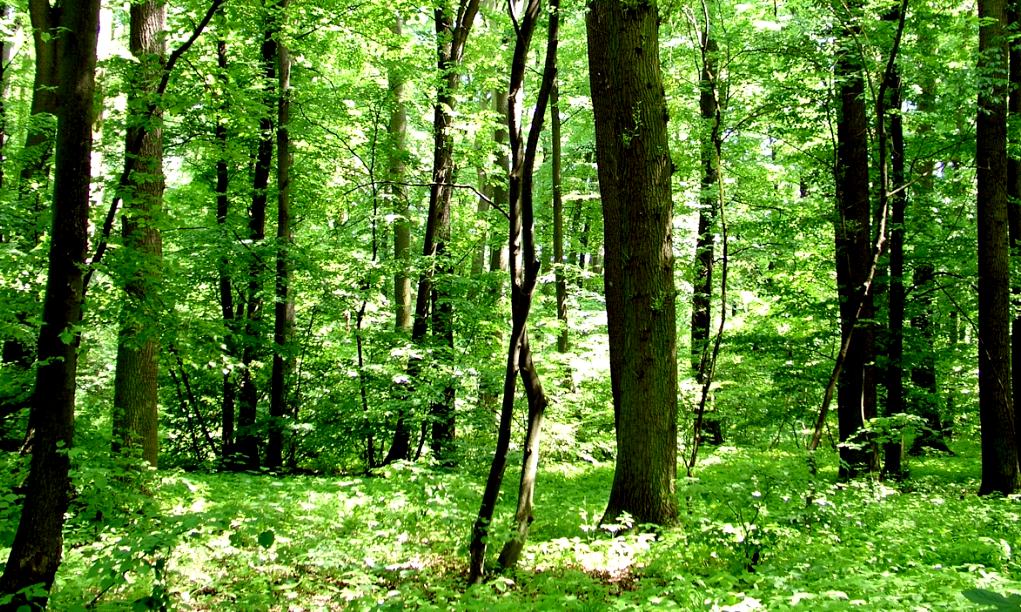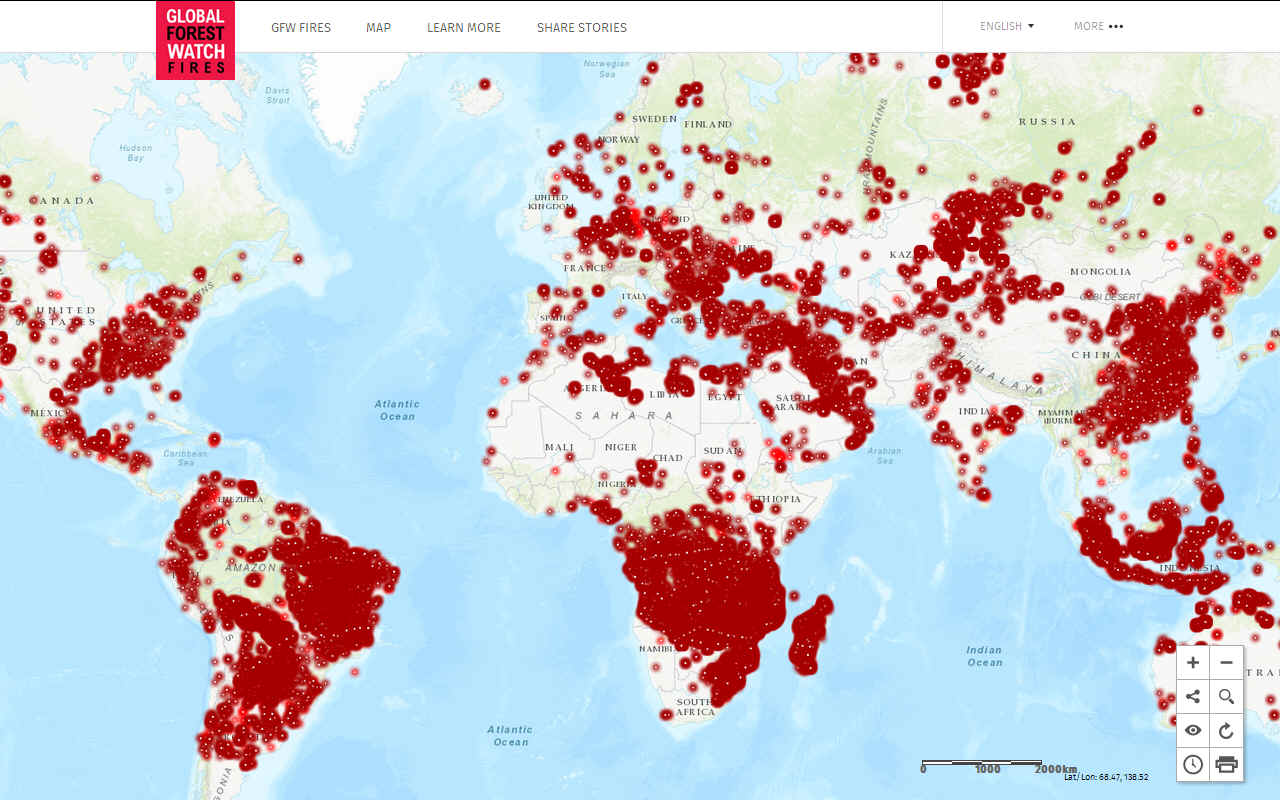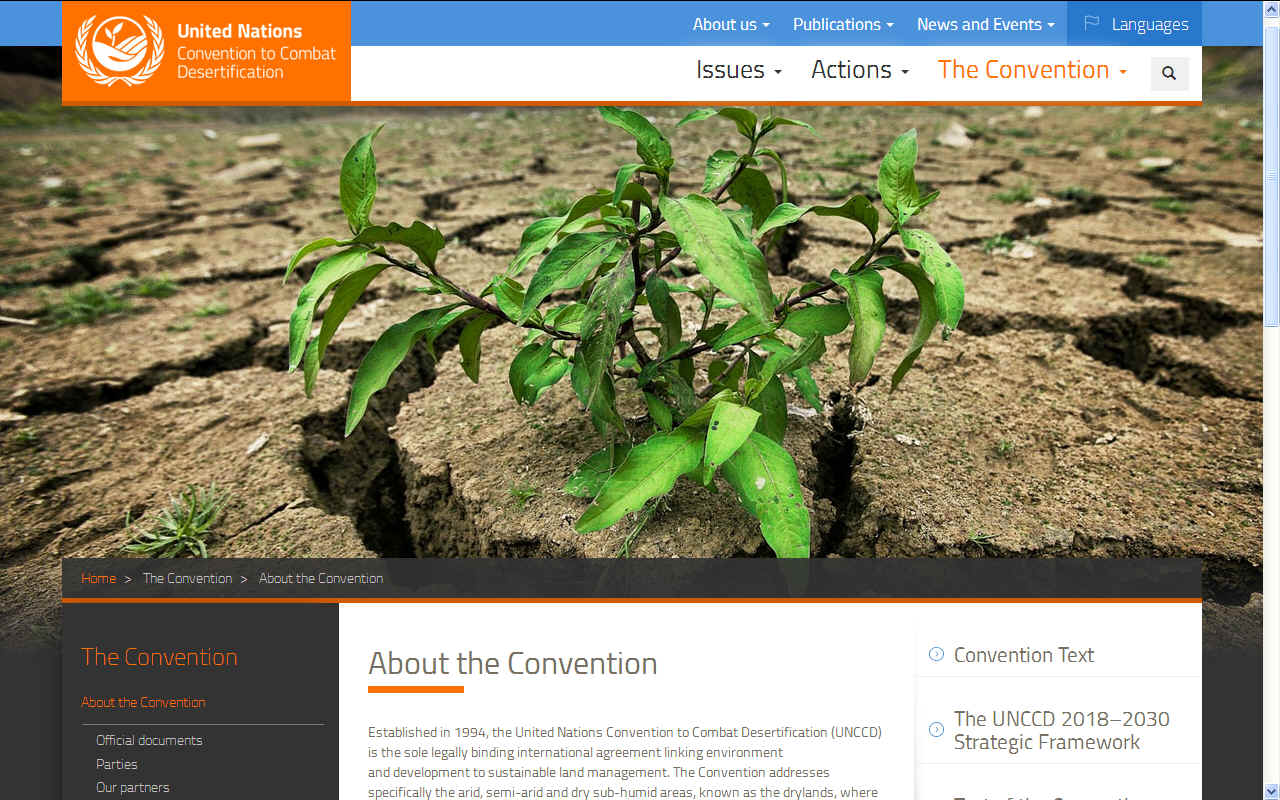|
FOREST FIRES & DEFORESTATION
Please use our A-Z INDEX to navigate this site |
||||||||||||||||||||||||||||||||||||||||||||||||||||
"Mmmm. Those crazy hippies might have a point. It is getting a little warmer than I'd Like."
We need to plant more trees - a whole lot more trees, not clear them, and especially not waste timber that is a vital renewable resource for zero carbon house building. Forest fires that cause deforestation are raising the temperature of Planet Earth and there is no Planet B. In science fiction this is called terraforming, where humans condition other planets to make their atmosphere hospitable for life as we know it (Jim).
It's getting to that stage here on Earth.
CHOKING - What fools cut all the trees down? We are an intelligent species, but are we smart enough to know when enough is enough - because we naturally exploit everything to make money - a fairy tale invention, where paper and digital savings are taken as wealth. When money will be an illusion when you can no longer breathe. Wealth, is a healthy planet, a balanced economy, food and energy security and the knowledge to keep us all safe.
HOW MANY TREES SHOULD WE PLANT ?
Assuming that it takes 6 trees to provide the oxygen for each person on earth to breathe, then with the population likely to rise from 7.7 to 9.7 billion people in the next 30 years, that means we would need to plant an additional 12 billion trees, or 400,000,000 million trees per year - just for people to breath. That is over a million trees a day - or roughly 5,000 trees per country per day. It is possible, but would require significant effort and planning.
The real question is though: would we have enough space on land to plant all those trees, where only 30% of the Earth is land? With competing pressure on land for agriculture, houses and industrial buildings, that is the burning question.
That's the bad news. Now the really bad news.
Algae and kelp in the oceans also generate oxygen but we cannot mass plant seaweed and we are polluting our oceans, hence seaweeds are reducing in numbers - almost in proportion to human population growth (just a thought, not a fact).
Marine species produce as much as 70-80 percent of the oxygen in the atmosphere of the Earth.
This means that land-dwelling species alone would not be able to supply the quantity of oxygen that life on Earth requires.
Without the oxygen produced by marine species, mainly seaweeds, life would not be possible on our planet, which makes algae
(and seaweeds) crucial contributors and facilitators of all existence on Earth.
SPACE - The final frontier. Do we have enough land area to plant sufficient trees to make the oxygen for humans to breathe. Or, do we need another planet? Answers on a postcard, or better still, save your energy, you are going to need it.
IRRESPONSIBLE AGRICULTURE
The deliberate setting of forest fires aimed at clearing land for agriculture or building should be made an international criminal offence by the United Nations.
Irresponsible logging should also be made an international criminal offence. Timber should be harvested sustainably, with approved replanting schemes as part of a Circular Economy. No tree should be cut, except for diseased and dying trees, without a replanting plan. A local Arboriculturist or Arboricultural Consultant should certify any reason for removal of a tree, such as a dangerous situation on an incline, close to a building.
Log and coal fires should be restricted in use, with climate offset mitigation measures in place for limited recreational and residential use.
To make this work, we'd need to make it easy for lumber companies and timber growers to carry on with legitimate business, without burdening them with red-tape. Civil servants and policy makers often overlook the difficulties of running a legal enterprise, without making these essential entrepreneurs feel like criminals, or not appreciated for what they are doing.
CLIMATE PANELISTS - During a conference on climate change at Brighton University in October 2019, Stephen Lloyd MP, Dr Adriana Ford and Professor Andrew Church answered questions as to the problems and potential solutions, one of which was planting more trees. Dr Ford (centre) is the Centre Manager, Leverhulme Centre for Wildfires, Environment and Society, Imperial College London/King’s College London.
FOREST FIRE A TO Z
Arctic Bolivian British Columbian Canadian - Saskatchewan Chilean Croatian Ecuador Europe - Heatwave 17 July 2022 Germany Greece Malaysian Mongolian Portugal Sweden USA - California, Yosemite - Montana - Georgia - Sacramento UK - Saddleworth Moor - Moray - Dartmoor
China
In Singapore, some of the 2015 FINA Swimming World Cup's events on 3 October 2015 were cancelled as the PSI was in the 'Unhealthy' range. In Thailand, the haze from Sumatra had turned most parts of southern Thailand such as Narathiwat, Pattani, Phuket, Satun, Songkhla, Surat Thani, Trang and Yala provinces unsightly, even reaching hazardous levels on 7 October. In Vietnam, Ho Chi Minh City and other provinces in Southern Vietnam had been enveloped in fog since 4 December
BRAZIL - Soldiers investigate illegal clearing of the Amazonian forest. There are new ways of tracking illegal clearing using mobile phones to listen for chainsaws. Satellites also play a part in monitoring unauthorized activity.
BIODIVERSITY
Deforestation on a human scale results in decline in biodiversity, and on a natural global scale is known to cause the extinction of many species. The removal or destruction of areas of forest cover has resulted in a degraded environment with reduced biodiversity. Forests support biodiversity, providing habitat for wildlife; moreover, forests foster medicinal conservation. With forest biotopes being irreplaceable source of new drugs (such as taxol), deforestation can destroy genetic variations (such as crop resistance) irretrievably.
CATTLE RANCHING
Deforestation in Brazil increased by 88% for the month of June 2019, as compared with the previous year. Some 80% of the deforestation of the Amazon can be attributed to cattle ranching, as Brazil is the largest exporter of beef in the world. The Amazon region has become one of the largest cattle ranching territories in the world.
CLIMATE CHANGE
In terms of climate change, cutting trees both adds carbon dioxide to the air and removes the ability to absorb existing carbon dioxide. If tropical deforestation were a country, according to the World Resources Institute, it would rank third in carbon dioxide-equivalent emissions, behind China and the U.S.
Twenty-three percent 23% of tree cover losses result from wildfires and climate change increase their frequency and power. The rising temperatures cause massive wildfires especially in the Boreal forests. One possible effect is the change of the forest composition.
DEFORESTATION
Deforestation occurs around the world, though tropical rainforests are particularly targeted. If current deforestation levels proceed, the world's rainforests may completely vanish in as little as 100 years, according to National Geographic. Countries with significant deforestation in 2016 included Brazil, Indonesia, Thailand, the Democratic Republic of Congo and other parts of Africa, and parts of Eastern Europe, according to GRID-Arendal, a United Nations Environment Program collaborating center. The country with the most deforestation is Indonesia. Since the last century, Indonesia has lost at least 39 million acres (15.79 million hectares) of forest land, according to a study by the University of Maryland and the World Resource Institute.
Deforestation is the permanent destruction of forests in order to make the land available for other uses. An estimated 18 million acres (7.3 million hectares) of forest, which is roughly the size of the country of Panama, are lost each year, according to the United Nations' Food and Agriculture Organization (FAO).
Deforestation is considered to be one of the contributing factors to global climate change. According to Michael Daley, an associate professor of environmental science at Lasell College in Newton, Massachusetts, the No. 1 problem caused by deforestation is the impact on the global carbon cycle. Gas molecules that absorb thermal infrared radiation are called greenhouse gases. If greenhouse gases are in large enough quantity, they can force climate change, according to Daley.
While oxygen (O2) is the second most abundant gas in our atmosphere, it does not absorb thermal infrared radiation, as greenhouse gases do. Carbon dioxide (CO2) is the most prevalent greenhouse gas.
DEFORESTATION STATISTICS:
- Forests currently cover about 30 percent of the world’s landmass, according to National Geographic.
- The Earth loses 18.7 million acres of forests per year, which is equal to 27 soccer fields every minute, according to the World Wildlife Fund (WWF).
- It is estimated that 15 percent of all greenhouse gas emissions come from deforestation, according to the WWF.
- In 2016, global tree cover loss reached a record of 73.4 million acres (29.7 million hectares), according to the University of Maryland.
- CO2 accounts for about 82.2 percent of all U.S. greenhouse gas, according to the Environmental Protection Agency (EPA). Trees can help, though. About 300 billion tons of carbon, 40 times the annual greenhouse gas emissions from fossil fuels, is stored in trees, according to Greenpeace.
GFWF - Global Forest Watch Fires is an online platform for monitoring and responding to forest and land fires using near real-time information. GFW Fires can empower people to better combat harmful fires before they burn out of control and hold accountable those who may have burned forests illegally.
GFW Fires combines real-time satellite data from NASA’s Active Fires system, high resolution satellite imagery, detailed maps of land cover and concessions for key commodities such as palm oil and wood pulp, weather conditions and air quality data to track fire activity and related impacts in the South East Asia region. GFW Fires also offers on-the-fly analysis to show where fires occur, and help understand who might be responsible.
By working with national and local governments, NGOs, corporations, and individuals, GFW Fires is working to quicken fire response time, ramp up enforcement against illegal fires, help ensure those who are illegally burning are held accountable, and coordinate relationships between government agencies.
ECONOMICS
Damage to forests and other aspects of nature could halve living standards for the world's poor and reduce global GDP by about 7% by 2050, a report concluded at the Convention on Biological Diversity (CBD) meeting in Bonn in 2008. Historically, utilization of forest products, including timber and fuel wood, has played a key role in human societies, comparable to the roles of water and cultivable land. Today, developed countries continue to utilize timber for building houses, and wood pulp for paper. In developing countries, almost three billion people rely on wood for heating and cooking.
GOOD FOOD GUIDE
For consumers, it makes sense to examine the products and meats you buy, looking for sustainably produced sources when you can. Nonprofit groups such as the Forest Stewardship Council and the Rainforest Alliance certify products they consider sustainable, while the World Wildlife Fund has a palm oil scorecard for consumer brands.
PALM OIL
The social and environmental impacts of oil palm cultivation is a highly controversial topic. Oil palm is a valuable economic crop and provides a major source of employment. It allows many small landholders to participate in the cash economy and often results in the upgrade of the infrastructure (schools, roads, telecommunications) within that area. However, there are cases where native customary lands have been appropriated by oil palm plantations without any form of consultation or compensation, leading to social conflict between the plantations and local residents. In some cases, oil palm plantations are dependent on imported labour or illegal immigrants, with some concerns about the employment conditions and social impacts of these practices.
Oil palm production has been documented as a cause of substantial and often irreversible damage to the natural environment. Its impacts include deforestation, habitat loss of critically endangered species, and a significant increase in greenhouse gas emissions.
There is a clear record of
fire being used to clear vegetation for oil palm development in Indonesia, where in recent years drought and man-made clearances have led to massive uncontrolled forest fires, covering parts of Southeast
Asia in haze and leading to an international crisis with Malaysia. These fires have been blamed on a government with little ability to enforce its own laws, while impoverished small farmers and large plantation owners illegally burn and clear forests and peat lands to develop the land rather than reap the environmental benefits it could offer.
RATE OF LOSS
Global deforestation sharply accelerated around 1852. It has been estimated that about half of the Earth's mature tropical
forests - between 7.5 million and 8 million km2 (2.9 million to 3 million sq mi) of the original 15 million to 16 million km2 (5.8 million to 6.2 million sq mi) that until 1947 covered the
planet - have now been destroyed. Some scientists have predicted that unless significant measures (such as seeking out and protecting old growth forests that have not been disturbed) are taken on a worldwide basis, by 2030 there will only be 10% remaining, with another 10% in a degraded condition. 80% will have been lost, and with them hundreds of thousands of irreplaceable species.
SLASH AND BURN
Burning can be done quickly, in vast swaths of land, or more slowly with the slash-and-burn technique. Slash and burn agriculture entails cutting down a patch of trees, burning them and growing crops on the land. The ash from the burned trees provides some nourishment for the plants and the land is weed-free from the burning. When the soil becomes less nourishing and weeds begin to reappear over years of use, the farmers move on to a new patch of land and begin the process again.
The degradation of forest ecosystems has also been traced to economic incentives that make forest conversion appear more profitable than forest conservation. Many important forest functions have no markets, and hence, no economic value that is readily apparent to the forests' owners or the communities that rely on forests for their well-being. From the perspective of the developing world, the benefits of forest as carbon sinks or biodiversity reserves go primarily to richer developed nations and there is insufficient compensation for these services.
Developing countries feel that some countries in the developed world, such as the United States of America, cut down their forests centuries ago and benefited economically from this deforestation, and that it is hypocritical to deny developing countries the same opportunities, i.e. that the poor shouldn't have to bear the cost of preservation when the rich created the problem.
TREE PRESERVATION ORDERS (TPOs)
In the UK they have TPOs. These orders are to protect trees that are considered to be of special beauty or specimen interest, such as to benefit the local community. The United Kingdom Parliament has declared a Climate Emergency with more than 200 local authorities following the lead of central Government.
WOOD IS GOOD x 10 PLEASE
Timber grown for wood is only good if part of a replanting scheme, with at least 2 trees planted for every one felled, though we would suggest up to 10 trees should be planted to offset the loss of carbon absorption during growth.
DESERTIFICATION COP HISTORY
CLIMATE CHANGE COP HISTORY
BIODIVERSITY COP HISTORY
OUR (SUGGESTED) SIX STEPS TOWARD A COOLER PLANET
1. TRANSPORT: Phase out polluting vehicles. Governments aim to end the sale of new petrol, and diesel vehicles by 2040 but have no infrastructure plan to support such ambition. Such infrastructure should exceed the performance of fossil fuel filling stations, prolong EV battery life and provide power grids with a measure of load leveling. Any such system should seek to obviate the provision of millions of fast charge points where implementation could prove to be a logistical nightmare and an inefficient energy delivery system. This may involve international agreement as to energy storage format and statute to steer car makers to collaborate (in part) in a world of competition.
Marine transport can be carbon neutral given the right policies, with phased transition in specific stages such as not to unduly penalize present investment in LNG shipping and other recent MARPOL compliant IC powered vessels. Future cargo vessel should be at least in part powered by renewable energy, on the road to zero carbon via the development of shorter distance ferries and the like, making allowances for technology catch-up from 2030 with scrappage trade in on outdated ships and marine taxes on internal combustion engines.
Air travel powered by kerosene should attract hefty mitigation offset, where low carbon alternatives should be encouraged.
2. RENEWABLES: Renewable energy should replace carbon-based fuels (coal, oil and gas) in our electricity for homes, factories, heating and transport. Coal and nuclear power plants should be phased out.
3. HOUSING: On site micro or macro generation is the best option, starting with new build homes that are both affordable and sustainable by design to replace crumbling housing stocks. Encourage building in timber to provide carbon lock from a renewable natural resource. Make sustainable housing a permitted development. Taking out the need to apply for planning permission, will cut out council blockers from the decision making process, to stamp out empire building agendas.
4. AGRICULTURE: We need to grow more trees to absorb carbon emissions from a growing population, air travel, and to build new homes. We should promote reductions in food waste and eating of foods that use less energy to produce. Educating children on these matters in schools and via campaigns such as no meat Mondays, should be part of ordinary study.
5. INDUSTRY: Factories should be aiming for solar heating and onsite renewable energy generation. EV parking and even service facilities should be part of new industrial estates as part of any building permissions.
6. POLITICS: - National governing bodies need to adopt rules to eliminate administrative wastages, to include scaling down spending on war machines, increasing spend on educating the public and supporting sustainable social policies that mesh with other cultures. This includes fostering policies and making funds available to close links in the technology chain to make up for lost time. Kleptocratic empire building must cease in the search for natural equilibrium.
EASTER ISLAND - Was once well populated by trees, but they went too far, just like the Egyptians when they destabilized the banks of the Nile by burning trees to make plaster.
WILDFIRES
Wildfires can burn millions of acres of land at rapid speeds and can consume everything in their paths: trees, homes, even humans as part of the fauna quotient. These rolling flames travel up to 14 miles an hour, which converts to about a four-minute mile pace, and can overtake the average human in minutes.
Though they are classified by the Environmental Protection Agency as natural disasters, only ten to 15 percent of wildfires occur on their own in nature. The other 85 to 90 percent result from
human causes, including unattended camp and debris fires, discarded cigarettes, and arson.
It makes no sense building conventional houses in areas that are going to get hotter and be subject to more wild bush fires. Low cost fire resistant houses were built in England in the 1970s using Insulcrete. Unfortunately, that factory went to the wall because of Margaret Thatcher, but there is nothing stopping any entrepreneur from producing a similar material and building system for fire prone areas of Californian and Australia.
HOW TO STOP A WILD FIRE
WHAT TO DO IN A WILD FOREST FIRE
- If you live in a fire-prone area, its best to prepare for that course of action ahead of time.
- Have an evacuation plan in mind and a “go bag” with emergency supplies already packed during fire season.
- Keep brush, weeds, and other potential fuels trimmed back on your property, especially around your home.
- Put away grills, propane tanks, or other flammable materials that may be in your yard.
- Close all doors and windows, fill sinks, tubs, and as many other containers as you may have with water to discourage fire.
- Shut off natural gas, propane, or fuel oil supplies.
- When you purchase a home in a wildfire-prone area, try to avoid neighborhoods on steep slopes or barren of vegetation, suggests the California Chaparral Institute.
- Although some people fear that houses near shrubs are more likely to burn, that’s not necessarily the case, the institute says. Rather, a landscape without vegetation can be the perfect runway for winds to bring embers, which are one of the biggest threats to homes during a wildfire.
- Wetting your roof may help reduce the risk of airborne embers catching, says the California Chaparral Institute. In fact, some people in fire-prone areas even install rooftop sprinklers for that purpose.
-
If you cannot leave as a fire approaches, dial 911. Put on a face mask, or
if you have one, an N95 respirator to help reduce smoke and particle inhalation.
- Listen for emergency alerts.
- If you cannot leave, stay inside. Go to the safest building or room, with the lowest smoke levels. Stay low for the best air. If you don't have a mask breathe through a wet cloth.
-
If you are caught outside, try to find a body of water to crouch in. If you can't, find a depression with the least vegetation and lie low, covering yourself with wet blankets, clothes, or soil if possible.
- Listen to authorities before drinking water from the area.
- Avoid items that are hot, smoky, or charred.
- Text friends and family, but don’t call. Lines may be busy.
- Wear a dust mask and document property damage.
- Beware of the risk of flooding, since trees and protective vegetation might have been removed, exposing loose soil.
LINKS & REFERENCE
https://centreforwildfires.org/ https://fires.globalforestwatch.org/ https://www.azquotes.com/quotes/topics/forest-fires.html https://www.nationalgeographic.com/environment/natural-disasters/wildfires/ https://www.epa.gov/ghgemissions/overview-greenhouse-gases http://www.greenpeace.org/international/en/campaigns/forests/ https://www.livescience.com/27692-deforestation.html
SOIL EROSION - The more land that we lose to grow crops the greater the food security issue. As the ice caps melt, desertification spreads to make Earth more uninhabitable.
THE DIRTIEST DOZEN - WORLD'S TOP HUMAN RIGHTS ABUSERS
HEATWAVES A TO Z
Australia Brazil
& Amazon rainforest
London had a similar experience in July 2022 Tokyo & Osaka, Japan June 2022 USA
Please use our A-Z INDEX to navigate this site
|
||||||||||||||||||||||||||||||||||||||||||||||||||||
|
This website is provided on a free basis as a public information service. copyright © Climate Change Trust 2022. Solar Studios, BN271RF, United Kingdom.
|






















